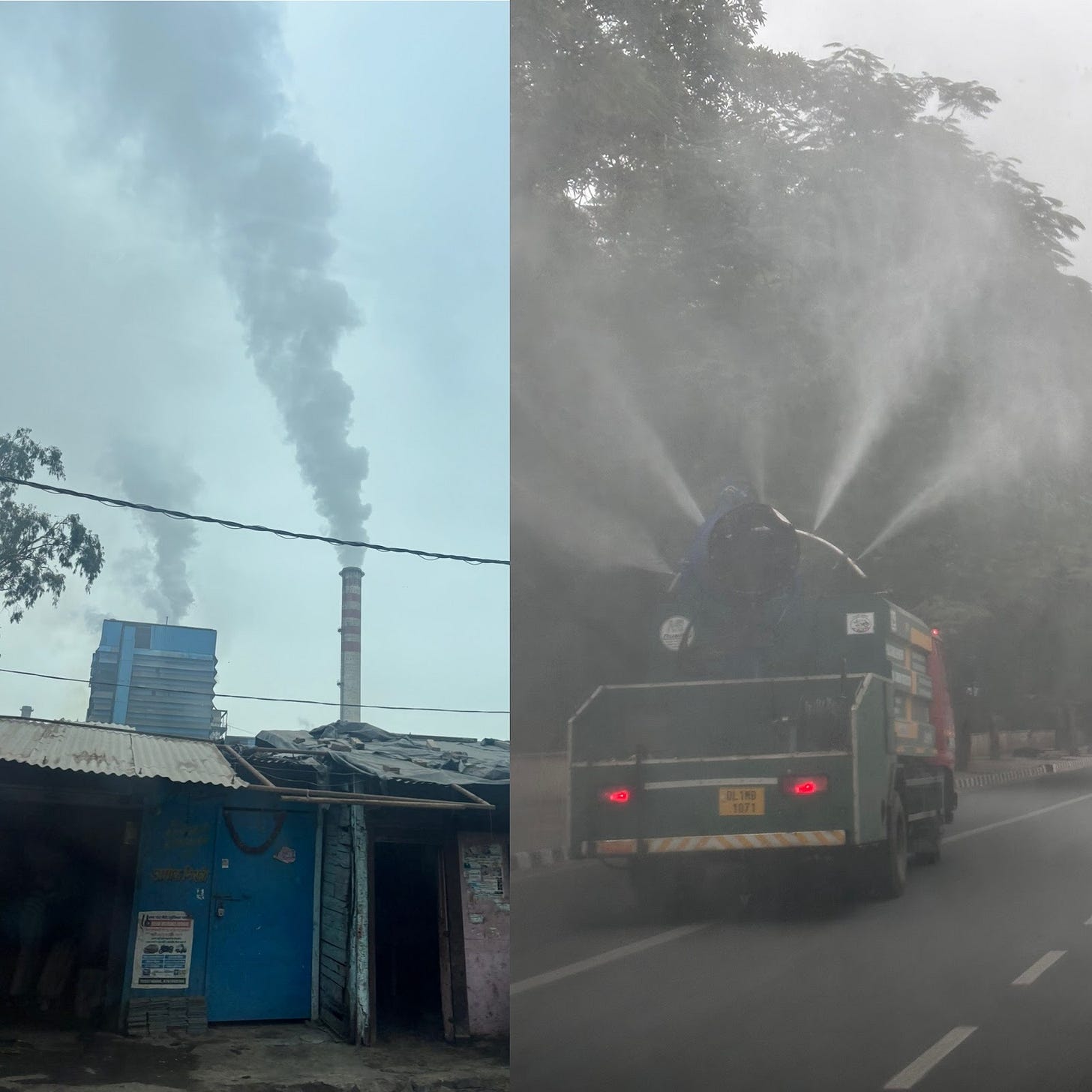From Smog to Solutions: What India’s Budget Can Do to Fight Air Pollution
New data shows air pollution increased in Delhi and several other places in 2024. The upcoming national Budget is an opportunity to fund impactful change. Recent reportage shows what's needed.
Days before the Indian government’s annual Budget presentation a member of the ruling BJP moderated a roundtable session on climate, air pollution and urban sustainability challenges. The meeting in Delhi, with experts, civil society organisations, and journalists, aimed to compile a wishlist for the Finance Minister who will present the Budget in Parliament.

Economic Loss Due to Air Pollution in Delhi
Delhi is a regular chart-topper for the most polluted place in India and the world.
One standout figure presented by experts was this: The economic loss in the Indian capital due to deaths linked to PM2.5 air pollution was a staggering $1.2 billion in 2019. In 2024, pollution was the highest in four years (see chart).

It’s not just Delhi’s pollution which has worsened. CREA, a research organisation, reports that in 2024, 150 cities exceeded the national PM2.5 standards, up from 135 cities in 2023.
Throwing money at the problem isn’t going to produce results. The government has repeatedly set goals and allocated funds, well over INR 11,000 crores or $1.3 billion for 2019-2025 of which only about two-thirds has been used. How far that has reduced pollution is debatable.
However, in the absence of a stronger or more regular mechanism to set goals and allocate funding, the budget remains the best chance of delivering cleaner air.
Air Pollution Measures in the Union Budget
Here are three suggestions for the team finalising the Indian government’s annual budget for 2025-26:
Free/almost free cooking gas for poor households: Expand Ujjwala to provide cooking gas (LPG) free or close to free to all poor households, especially in rural areas. Ensure last-mile delivery is reliable. The expected rise in economic productivity and decrease in health costs will be worth it. Researchers point out how ending domestic sources of PM 2.5 can vastly improve air quality in most of India to meet national standards, though the northern plains will remain a challenge.
MSP against stubble burning: For the paddy stubble burning states of Punjab, Haryana, western UP and Madhya Pradesh, start offering a guaranteed price (MSP) for non-paddy crops, say, millets. This can be phased over 1-2 years, but action must start this year. And it’ll take political spine to do so. Still, hundreds of millions of people will probably thank you for reducing or even eliminating the large-scale farm fires of October-November.
[Both these issues often trigger reactionary politics, derided as freebies and bowing to farmer vote-banks. But there’s been enough analysis to support these measures at least for the interim future.]
Expand CAQM’s jurisdiction and budget allocation to cover at least the Indo-Gangetic Plains, from Punjab to West Bengal covering a population of over 400 million. The Commission for Air Quality Management, created by an Act of Parliament a couple of years ago, may not be perfect. Nor has it lowered air pollution in and around Delhi, its original mandate; maybe it failed so far because it hasn’t leveraged its powers fully. However, it remains the best bet. That’s because of its airshed approach—operating across political and administrative boundaries. Expansion of jurisdiction and budget by itself won’t solve much if other reforms and course corrections aren’t also undertaken, like focusing on PM 2.5, staffing of pollution control agencies, data transparency, stepping up monitoring and modelling etc.
These three measures alone will not fix India’s air pollution health crisis, but such bold decisions could deliver results faster than efforts of the past decade.
There are a whole slew of other steps that have long been advocated by government and other experts. For instance, one of the more straightforward steps is to rapidly improve public transit systems using EVs and reduce a vast number of private, fossil fuel vehicles in cities. In places like Delhi and the neighbouring state of Haryana, vehicular pollution can contribute as much as a third of PM 2.5 during winter.
Recent Articles on India’s Air Pollution
For more reasons why the Union Budget must initiate effective action against air pollution, the Finance Ministry team can take a look at these three timely reads:
Air pollution is not a winter problem alone. It is worsening in summer thanks to the killer heat. It’s linked to global warming and transport – World’s record heat is worsening air pollution and health in Global South (Mongabay)
How smog guns miss the target and waste funds – 67% funds under clean air plan used for clearing dust (The New Indian Express)
India Built a Perfect System to Ignore Its Deadly Air. (It's working.) – (The Plank)
The Budget is expected to be presented on 1 February 2025.


